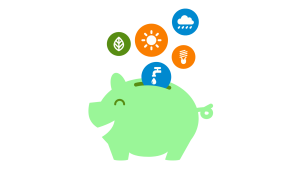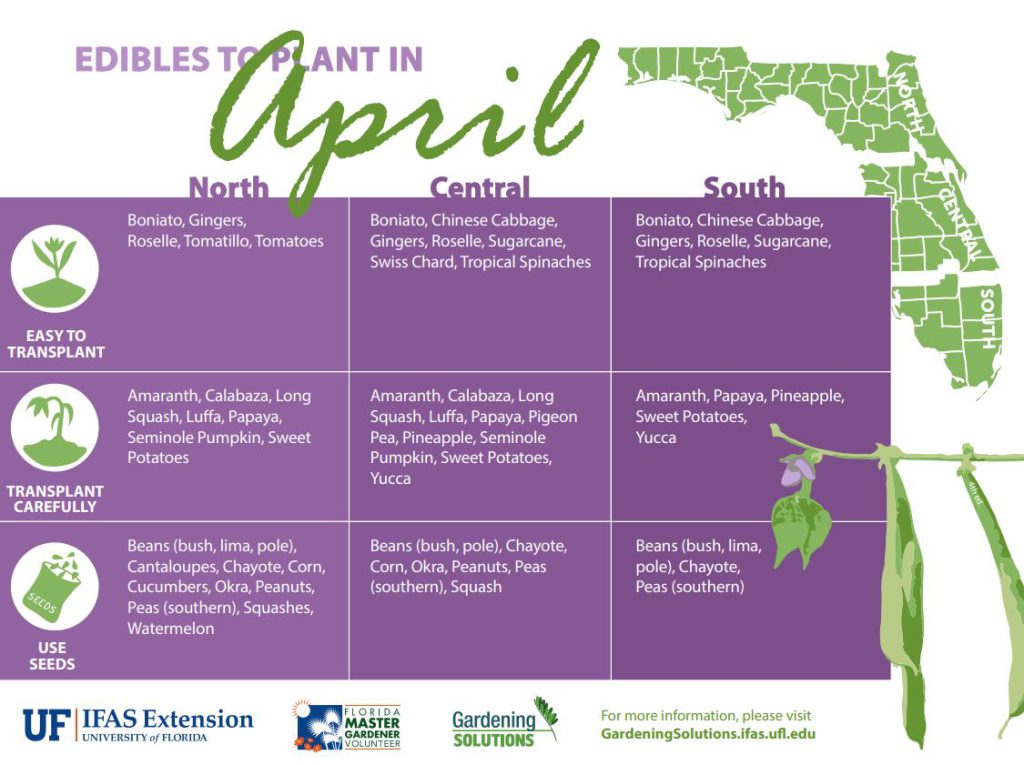Do you have a spring planting habit? If you are interested in growing food crops in your Florida garden it is very important to keep your seasons in mind when selecting what you will plant. I may break your heart when I tell you that now is not the time to buy the beautiful beefsteak tomato plant, even if it seems to be calling your name from across the aisle at the box store. It’s a pollination situation, but that is a blog for another day. So what can you plant?
Read on to explore FREE easy-to-use IFAS resources about Florida gardening seasons as a way to save on time, money, and maybe some sweat and tears, too.
Ignoring Florida planting seasons can lead to tears for vegetable gardeners.
For many that live in Florida we joke, saying, “what seasons?” or saying we have seasons of “hot and hotter.” Many folks have a hard time detecting a change in season without snow -so it can be challenging to remember a crop may care when its planted. We can grow food year-round in Florida, but WHAT we can grow does depend on the season. Getting it wrong can mean more effort, more money, and less food to eat.
Why? Growing a crop out of its preferred season makes for more work trying to help your plants simply survive. These stressed plants can be more susceptible to pests and disease requiring the gardener to spend more time scouting, treating, and tending the plants in the hopes of a harvest that will likely be underwhelming. After initial startup costs for only one season of growing with a poor harvest- it can pinch the pocketbook. Unfortunately after a poor experience like this some people assume they are simply ‘bad gardeners’ and stop edible gardening altogether. This is why Florida seasons really aren’t a laughing matter when it comes to edible gardening.
Using some free resources and making some tweaks to when you plant certain crops can help edible gardening become a lifelong enjoyable hobby, one that feeds you, too. So- let’s be easier on ourselves by planting crops suitable for the season. This may help avoid the particular feeling that you’ve exhausted all your efforts and your stingy tomato plant is laughing at you as you resort to singing it ballads in a last ditch appeal for a harvest. I don’t try this serenade method simply because my singing voice would make the happiest, healthiest plant wish for blight or a poorly aimed weed whacker.
So – keep your plants seasonally appropriate. Remember with vegetable gardening- right plant, right place, AND right season!

Know what to plant with a glance
Cool infographics like the one above are in the Edibles to Plant series. These infographics are one of my favorite references because a quick glance tells me what can be planted and whether to sow seeds or put out a transplant. You can find the other months in this series along with other handy infographics here https://gardeningsolutions.ifas.ufl.edu/plants/plant-of-the-month/infographics.html
Zip into an easy reference
Sometimes folks referencing the infographic wonder…”Which region am I in, central or south?” There can be some variability considering Sarasota County has both inland and coastal areas and this may influence likelihood of frost, etc. There is an IFAS resource that can help you explore what to plant- and all you need to know is your zip code. Its mobile-friendly, too. https://floridafresh.ifas.ufl.edu/
Once at the Florida Fresh website you can enter your zip code, then select the month you want to plant, and then it will share a list of crops you can plant in your area. If you want to know more about that crop and even some varieties to consider planting -you can click on ‘more info’. Be sure you are in the ‘plant now’ portion of the page for planting information. That website has an additional ‘Florida Fresh Now’ feature which shares what Florida crops may be in season at local markets. You can also click on ‘gardening info’ at the homepage to find resource guides about edible gardening in Florida.
Plant now, or prep and plant later?
When you explore the infographics linked above and forecast into the months of May, June, July you will notice what you can plant shrinks down. So if you are recently moved from the north and have a spring planting habit, you can decide now if you want to hurry into starting a garden to plant now, or hold off for the popular planting time in late summer/early fall, or explore ways you can work to enrich your soil over summer. The latter will be part of the next blog in April. If you decide you want to grow now – you can learn from Master Gardener Volunteers as they teach about growing some warm/hot seasonal crops in a recorded webinar “Some Like it Hot: Vegetable Gardening.”
More about hot season gardening and Florida growing seasons can be found in episodes 1 and 20 of our Edible Gardening Series webpage.
 4
4
